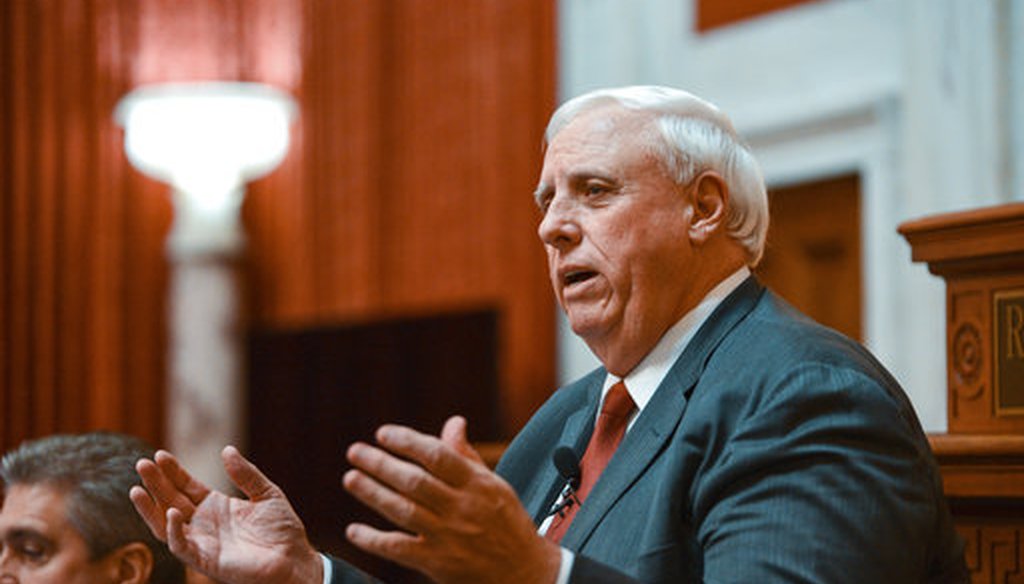

Our only agenda is to publish the truth so you can be an informed participant in democracy.
We need your help.


Gov. Jim Justice, R. W.Va., delivers his annual State of the State speech on Jan. 9, 2019. (AP)
Shortly before the start of the 2019 legislative session, West Virginia Gov. Jim Justice touted the state’s improved budget position for the 2019 fiscal year.
In a tweet sent on Jan. 8, Justice wrote, "Another month of record-breaking revenue numbers! For December, we had a $44.8 million surplus. Year-to-date we are $185.9 million above estimates. This is the largest cumulative surplus for the first six months of any fiscal year in state history!"
Is that correct? Justice’s office didn’t respond to inquiries, but we were able to find supporting evidence.
The tweet linked to a press release from the that detailed the list of revenues and expenses from the general revenue fund, and data from West Virginia State Budget Office supported the information in the press release.
The general revenue fund for December -- the most recent completed period at the time of Justice’s tweet -- had a $44.8 million dollar surplus, with collections totaling $185.9 million more than had been estimated. That’s in line with Justice’s tweet.
But is this actually the largest first-six-month surplus of any fiscal year in state history?
Numbers from WV Checkbook and the West Virginia State Budget Office, with information dating back to 1999, confirm that through the first six months of the 2019 fiscal year, West Virginia did indeed have the largest cumulative surplus since 1999.
The previous post-1999 high occurred in 2011, when the budget surplus hit $159.9 million more than estimated.
According to the governor’s office, the rise in collections can be attributed to an increased rate of growth in a number of taxes including severance tax, corporation net income tax, consumer sales tax and personal income tax.
It’s worth noting that every year, West Virginia’s economy grows bigger, so comparing budget figures across time, as Justice did, is tricky. The state’s gross domestic product, when adjusted for inflation, was 14 percent bigger in 2017 than it was in 1999.
Justice said for fiscal year 2019, West Virginia had "the largest cumulative surplus for the first six months of any fiscal year in state history."
We checked the historical data and found that he’s correct going back to 1999. However, that’s not the entire history of the state. We couldn’t confirm any data prior to 1999, so it’s conceivable that there was a larger surplus prior to that year.
We rate the statement Mostly True.
Jim Justice, tweet, Jan. 8, 2019
Office of the Governor, Gov. Justice: Revenue Collections show state has biggest surplus in history for first six months of any fiscal year, Jan. 8, 2019
West Virginia State Budget Office, December Report, accessed Jan. 15, 2019
West Virginia Checkbook, General Revenue Fund, accessed Feb. 23, 2019
In a world of wild talk and fake news, help us stand up for the facts.
